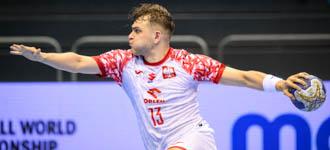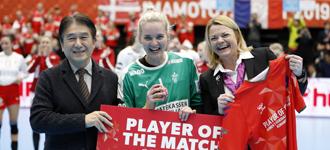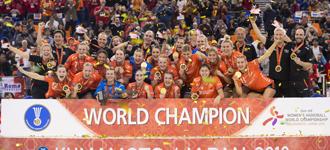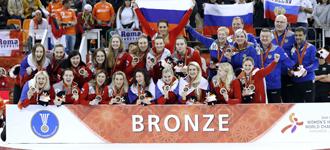Bertelsen: “We have seen a new culture and met fantastic people”
15 Dec. 2019
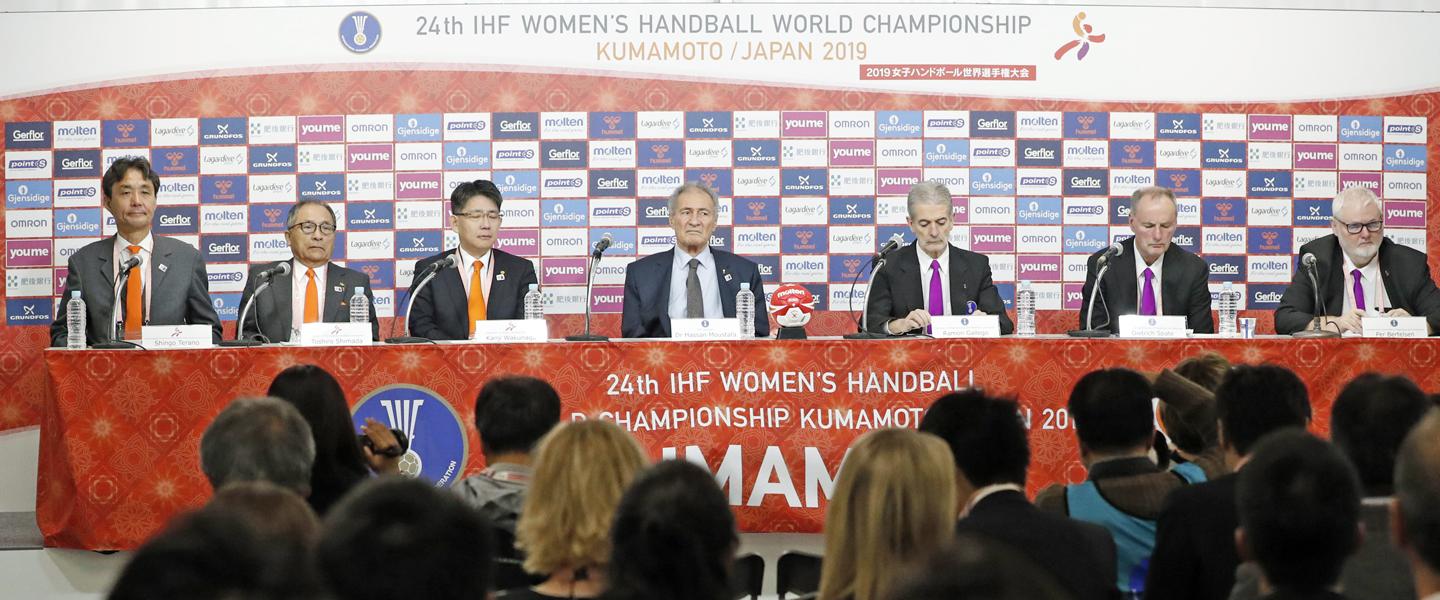
In addition to IHF President Dr Hassan Moustafa, a number of chairpersons of the IHF Commissions spoke at the closing media conference in front of over 65 international media.
Per Bertelsen, Chairman – IHF Commission of Organising and Competition (COC)
Three years ago we came here for the first inspection and we met a lot of fantastic people and now we are on the final day. We have seen a new culture, a new way to do things, but, most importantly of all, we have made a lot of good friends.
I want to thank all the volunteers; they have done a fantastic job. To the organising committee, it has not always been easy for you to work with us, but we have always found solutions. I want to thank you, the Japan Handball Association (JHA), Kumamoto Handball Association (KHA) and everyone else involved.
This competition has seen 96 games in five venues and there have been more than 300,000 spectators*, I have seen a lot of young people in the halls and I really hope for Japanese handball that a lot of them will start to play our fantastic sport. I also want to thank the media and television for showing our sport in the best way.
I also want to thank the people in the competition management who have done a very good job and our office staff who have been here and have really helped us with a lot of things.
Next time we will have the women’s championship with 32 teams at Spain 2021 and I am sure that it will be a fantastic competition.
Dietrich Spate, Chairman – IHF Commission of Coaching and Methods (CCM)
I would like to start with some general remarks about the level of this championship, and next year you will find on the IHF Education Centre a more in-depth analysis of this tournament.
Firstly, I will present some facts from the best eight teams here at Japan 2019 (Netherlands, Spain, Russia, Norway, Montenegro, Serbia, Sweden and Germany).
Shot efficiency – at the 2019 IHF Women’s World Championship it was 59.1%, and now it is 61.3%. As a team, Japan had, overall, 62% which was a really, really good result for them.
Looking to the positions, shot efficiency from the six-metre line, Serbia was the best with 78% and, as usual, in the last tournaments, Norway have the best wings, with 73%.
For the final until now the best back court row is coming from the Netherlands – an unbelievable 71 goals from nine metres, with 26 and 25 from the left back and centre back.
Technical faults at Germany 2017 was 12 per team, and now it is 12.3 per team, similar, but when you compare to the IHF Men’s World Championship, Denmark had an unbelievable 5.5%, so there is a little bit to do in this case.
Goalkeeper efficiency a bit down, but this is a general tendency in both men’s and women’s areas. In this tournament it was 32.5% from the best eight teams, but I want to point out our decision in the IHF Council. From 2021, teams can use five positions on the bench, and we are looking at the teams using one for goalkeeping coaches, but there is still a little bit of development to do in the women’s area to use more specialised goalkeeping coaches.
To underline what the President said, the women’s game is a high-speed game and we had a big, big and positive development with fast-breaks in all phases with quick throw-offs.
Defence is a little bit different. The teams don’t use so many different tactical variations, it is mainly a 6-0 defence and the game is more defensive. Today’s final will see the role of the active defence, how Spain won the semi-final. They had an unbelievable strategy in that game against the strong backcourt from Norway and it will be interesting to see what happens against Netherlands.
For 7v6, we made a lot of analysis from all games in this tournament and you will see a lot of this on the IHF Education Centre next January, but at the moment we think that is not a big topic in our game.
Ramon Gallego, Chairman – IHF Playing Rules and Referees Commission (PRC)
We have used here referees from four continents here at Japan 2019 - from Europe, Asia, Africa and Central and South America and all of them have prepared in advance in a professional way.
There are two mixed groups; one of the groups are well-experienced, quality top referees and the second group are the younger generation but have enough quality to be here.
All of them have shown a good performance in general in all the matches so far and shown professional behaviour, just like the teams, in technical, tactical, mental and physical preparation.
Physically, our top referees are absolutely different than many years ago with their training and with the help of professional physiotherapists and fitness coaches.
We have been in contact with all 24 head coaches in advance. Firstly, two months ahead of the world championship and here one day before the beginning. In these meetings we exchanged information about the most important topics, the instruction that the referees have to follow in the matches, and no doubt that was of benefit to all the teams. In general, the fair behaviour of all the coaches showed they understood the topics and the message.
Finally, for the referees, this is first step towards thinking about the Tokyo 2020 Olympic Games, the second step will be in March and April for the Olympic Qualification Tournaments and the third and final step is the actual Olympic Games themselves, in Tokyo.
*Following the media conference, the Japan 2019 Organising Committee confirmed the total attendance was 315,748.



